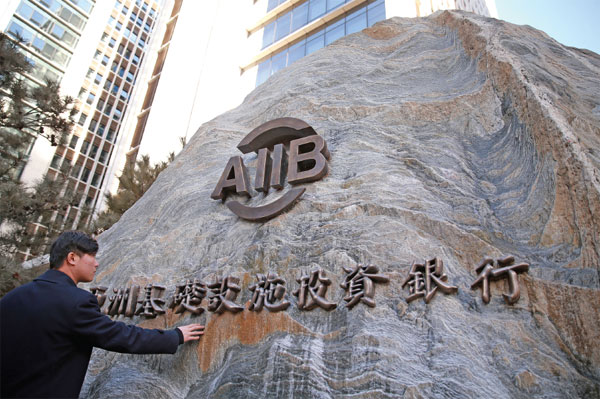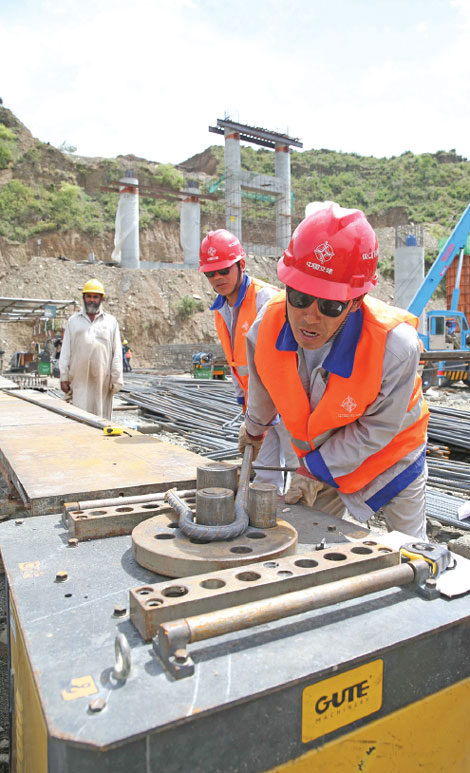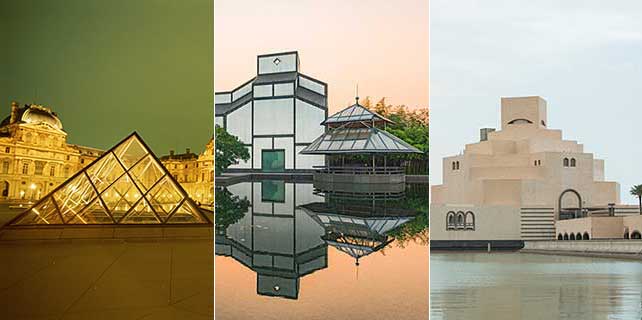Crucial player
With huge financial firepower at its disposal, AIIB could prove vital to sustaining global growth
Investment in Asian infrastructure might seem to many in the West like a mere regional concern - yet it could hold the key to sustaining global growth and providing jobs both in Europe and even in Donald Trump's Rust Belt.
Asia - which has been the engine of global growth for a decade or more - needs to spend $1.7 trillion a year on infrastructure up to 2030 just to maintain its current growth levels, according to the Asian Development Bank. It is currently spending just around half of that, $881 billion.
If the roads, railways, airports, power stations, water systems and other projects are also not built in an environmentally sustainable way, the planet itself could be irreparably damaged with global warming levels rising beyond control.
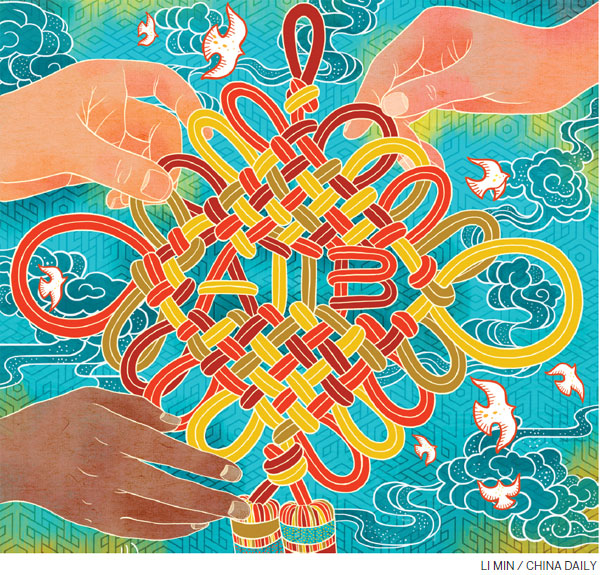
|
The Asian Infrastructure Investment Bank, headquartered in a futuristic skyscraper building on Financial Street in Beijing's Xicheng district, could prove to be one of the most important and influential institutions in the world over the next few years. Zou Hong / China Daily |
|
AIIB's President Jin Liqun signed an agreement with World Bank President Jim Yong Kim to strengthen cooperation between the two institutions. Yin Bogu / Xinhua |
The Asian Infrastructure Investment Bank, headquartered in a futuristic skyscraper building on Financial Street in Beijing's Xicheng district, could therefore prove to be one of the most important and influential institutions in the world over the next few years.
Launched in January last year it is one of the most tangible projects - along with the Silk Road Fund - to so far emerge from the Chinese government's Belt and Road Initiative.
With $100 billion of authorized capital - more than that of the World Bank itself - it has huge financial firepower at its disposal.

With 57 founding members - including the UK, France, Germany and Italy as well as Egypt from Africa (South Africa is a prospective member) - it is determined to show that it is a multilateral, rather than just a Chinese, institution.
To underline this, the bank's charismatic 67-year-old president Jin Liqun - himself a former vice-president of the Asian Development Bank - signed an agreement with World Bank President Jim Yong Kim in Washington on April 23 to strengthen cooperation between the two institutions.
"Signing this memorandum of understanding fits into our vision of a new kind of internationalism," said Jin.
"It deepens our relationship with the World Bank Group and sets up the mechanisms through which we can more easily collaborate and share information. We place a high value on our partnerships, because by working together we greatly increase our potential for positive outcomes in Asia."
The AIIB was first proposed by President Xi Jinping during a speech in Jakarta in October 2013.
China remains the largest shareholder, with a 26 percent holding, enough to give it a veto over major strategic decisions which require a 75 percent majority.
With new members coming on board, that shareholding will be diluted, so Chinawill have no greater control than any other country member.
When the bank was being set up, the administration of then US Barack Obama refused to join and put pressure on its allies to also not participate, in what many now believe was a clumsy strategic mistake.
But the UK, which was trying to build a new "golden era" of relations with the world's second-largest economy, signed up, followed by other major European economies.
James Woolsey, the former director of the Central Intelligence Agency and an adviser to US President Trump during his campaign, indicated the US would, in fact, join but there has been no clear signal so far.
"I think it is unlikely unless it came as part of a big wider deal between Trump and Xi Jinping, says Jacob Kirkegaard, senior fellow at the Peterson Institute in Washington.
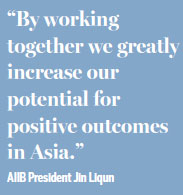
"During the next Democratic administration or a normal internationally-minded Republican one, I could see it."
It has been suggested that the AIIB was an attempt by Beijing to reshape the global financial architecture, which is dominated by the Washington-based International Monetary Fund and the World Bank.
So far, however, the new institution has actually co-financed five projects with the World Bank, including a power generation project in Pakistan, a natural gas pipeline in Azerbaijan and infrastructure development in Indonesia. It has also worked on projects with the Asian Development Bank, itself set up in 1966 and in which Japan has played a dominant role.
"If you look at the management that they (the AIIB) have appointed, many of them come from having direct experience with the World Bank. The Chinese government has always seen the AIIB as a complement and not a competitor to the existing international development banks," adds Kirkegaard.
Sun Yongfu, former director-general of the European department of the Chinese Ministry of Commerce, agrees that there needs to be new institutions like the AIIB because the scale of the funding need is so huge.
"The existing institutions cannot meet the demands of the countries within the region. There is a need for the AIIB to provide more financial support."
Lourdes Casanova, director of the Emerging Markets Institute at Cornell University, however, believes the AIIB has arisen partly out of frustration with the existing global financial order, something she says is reflected by the number of developing countries that are founding members.
"China and many of the emerging market economies like Brazil have been wanting a more prominent role within the existing multilateral banks. The World Bank and the IMF have always been dominated by the US and Europe," she says.
"It has been very successful in terms of the number of countries that have joined, which I think has been amazing."
Jeffrey Towson, professor of investment at Guanghua School of Management in Beijing, says where the AIIB is most distinct from the other institutions is its specialization in infrastructure.
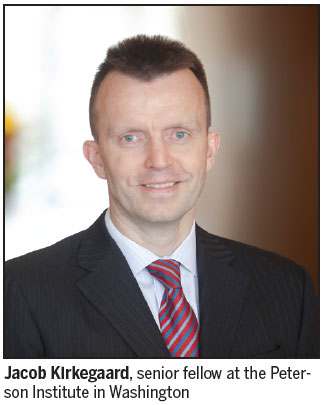
"If you look at the World Bank, I can't figure out what it does from its mission statement. It is a bit like a laundry list. It says it is going to increase employment, trade and create stability and peace and all these kind of things," he says.
"Focus, however, matters in my view. You look at the AIIB and it is an absolutely clear strategy. China does infrastructure better than anyone else. No one is even in their league. Strategically, this makes a lot of sense."
With Asia's infrastructure deficit widening, some believe the region is in a similar position now to how Europe was in the immediate aftermath of World War II.
It was then that the International Bank for Reconstruction and Development - now part of the World Bank Group - was set up at Bretton Woods in 1944 to finance many of the much-needed projects to resurrect Europe's bombed-out cities.
"There is a direct parallel. It was set up to deal with what was a devastated Europe," says Zhu Ning, Ocean wide professor of finance at Tsinghua University.
"While although Asia is not now devastated in the same sense, there is a similar need for infrastructure spending on a huge scale. It is a moment of history for Asia now, as it was for Europe then."
The bank will aim to tackle the infrastructure deficiency that is now acting as a constraint on the economic growth of the region, which also has worrying implications for global growth.
Kirkegaard at the Peterson Institute says this could be critical.
"Not only would the world lose an important engine of growth in Asia but there are still hundreds of millions of people, although while not in abject poverty, who do not have access to clean and running water and many other basic facilities."
He says there could be hugely damaging consequences for the planet if the infrastructure is not built sustainably, without consideration for the environment.
"This has to be got right or you are going to end up with a situation that you had in the United States after World War II, when all the infrastructure was built in a very energy-intensive polluting manner. If this happens again, we are all going to get very warm very quickly."
The AIIB also has impressed many so far by being a much leaner organization with fewer layers of management than existing multilateral banks.
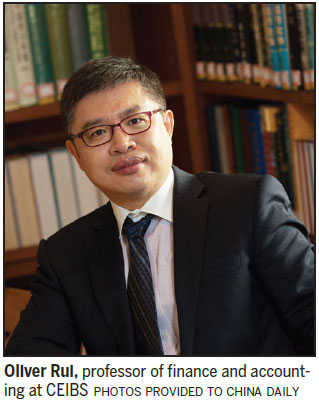
"The World Bank, for example, is a very bureaucratic organization, and it has become more so over the years. They (the AIIB) have been determined in the way they have set themselves up not to fall into the same trap," adds Casanova at Cornell.
Although the AIIB is a product of China's Belt and Road Initiative, there is some debate as to whether it is now also its financial arm.
Oliver Rui, professor of finance and accounting at CEIBS, is one who believes that it is.
"The main purpose of the AIIB is to be a financial platform for Belt and Road, because for it to work you need the finance to support these large-scale projects. Among the current international institutions there is no one who specializes in this area."
It certainly has the financial might to make a difference.
Kirkegaard at the Peterson Institute says: "It is certainly bigger than any of the other regional banks. The World Bank doesn't even come close either. If they chose to leverage this five times, which is not excessive, this would be $500 billion and that is before bringing in private capital as well. The deal flow that this could generate is enormous."
Tom Miller, senior Asia analyst at Gavekal Research and author of the new book, China's Asian Dream: Empire Building Along the New Silk Road, believes its financial muscle, however, is overstated.
He believes that many of the Belt and Road Initiative projects will be mainly funded by China's two policy banks, the China Development Bank and the China Export-Import Bank, which have access to China's huge stockpile of $3 trillion of foreign exchange reserves.
He points out that in 2014 the China Exim bank disbursed $151 billion, equivalent to Bangladesh's total GDP and more than AIIB's authorized capital.
"If you look at the size of China's development banks, that is where the real money is. They want to lend out loads of money so Chinese construction companies can go out and build stuff. With China's economy slowing, this will provide a new source of demand," he says.
Zhu at Tsinghua, who is part of a People's Bank of China and National Development and Reform Commission joint task force on the Belt and Road Initiative, believes this is a simplistic view of the way the policy banks operate.
"They are increasingly constrained by their internal compliance and risk management departments about how some of the loans don't meet their criteria," he says.
"They are also coming up against tougher capital controls, so even if they get the internal go, ahead, they might find themselves blocked by SAFE (the State Administration of Foreign Exchange, which regulates China's foreign exchange transactions)."
Zhu says none of this affects the AIIB because it is a multilateral institution.
"It doesn't face the same criteria. Its money comes from each country's contribution so it is not constrained by SAFE regulations. In addition, its cost of financing is lower because, as an international organization, its creditworthiness is higher. This is why it is a very important new player."
Although the AIIB's focus is currently just on Asia, its membership is from across the world and it may eventually be involved in projects in Africa, Latin America and even Europe, where there is a lot of creaking infrastructure.
It would then not just be a regional player, but one as globally ambitious as China's Belt and Road Initiative itself.
"The demand for infrastructure is global," says Sun, the former China Ministry of Commerce official.
"I think it can be eventually extended to other regions and provide the necessary financial support to realize the full ambition of China's Belt and Road Initiative."
andrewmoody@chinadaily.com.cn
|
Chinese workers at a road construction site in Havelian, Pakistan. Liu Tian / Xinhua |
From initiative to reality
September 2013: The Silk Road Economic Belt concept was introduced by President Xi Jinping during his visit to Kazakhstan. In a speech delivered at Nazarbayev University, Xi suggested that China and Central Asia cooperate to build a Silk Road Economic Belt. It was the first time the Chinese leadership mentioned the strategic vision.
October 2013: President Xi proposed building a close knit China-ASEAN community and offered guidance on constructing a 21st Century Maritime Silk Road to promote maritime cooperation. In his speech at the Indonesian parliament, Xi also proposed establishing the Asian Infrastructure Investment Bank to finance infrastructure construction and promote regional interconnectivity and economic integration.
November 2013: The Third Plenary Session of the 18th Central Committee of the Communist Party of China called for accelerating infrastructure links among neighboring countries and facilitating the Belt and Road Initiative.
December 2013: President Xi urged strategic planning of the Belt and Road Initiative to promote connectedness of infrastructure and build a community of common interests at the annual Central Economic Work Conference.
February 2014: President Xi and his Russian counterpart, Vladimir Putin, reached a consensus on construction of the Belt and Road, as well as its connection with Russia's Euro-Asia Railways.
March 2014: Premier Li Keqiang called for accelerating Belt and Road construction in the Government Work Report. The report also called for balanced development of the Bangladesh-China-India-Myanmar Economic Corridor and the China-Pakistan Economic Corridor.
May 2014: The first phase of a logistics terminal jointly built by China and Kazakhstan went into operation in the port of Lianyungang in East China's Jiangsu province.
November 2014: President Xi announced that China would contribute $40 billion to set up the Silk Road Fund. During the Beijing APEC meetings, Xi announced that the fund would be used to provide investment and financing support for infrastructure, resources, industrial cooperation, financial cooperation and other projects in countries along the Belt and Road routes.
December 2014: The Central Economic Work Conference sketched out priorities for the coming year, including the implementation of Belt and Road Initiative.
January 2014: The number of AIIB founding members, many of which are important countries along the Silk Road routes, rose to 26 after New Zealand, Maldives, Saudi Arabia and Tajikistan officially joined.
Feb 1, 2015: At a special meeting attented by Vice-Premier Zhang Gaoli, China sketched out priorities for the Belt and Road Initiative, highlighting transportation infrastructure, easier investment and trade, financial cooperation and cultural exchange.
March 5, 2015: Premier Li, in his Government Work Report, again highlighted the initiative, saying China will move more quickly to strengthen infrastructure with its neighbors, simplify customs clearance procedures and build international logistics gateways.
December 2015: The AIIB was officially established in Beijing with 57 founding members.
May 14-15, 2017: The Belt and Road Forum for International Cooperation will be held in Beijing. The upcoming forum will explore ways to address regional and global economic problems, generate fresh energy for interconnected development and make the Belt and Road Initiative deliver greater benefits to people of the countries involved. President Xi Jinping will attend the opening ceremony and deliver the keynote speech, and will host a round table meeting that will brain storm on policy and strategic development and interconnected development.
Source: english.gov.cn
(China Daily European Weekly 04/28/2017 page1)



